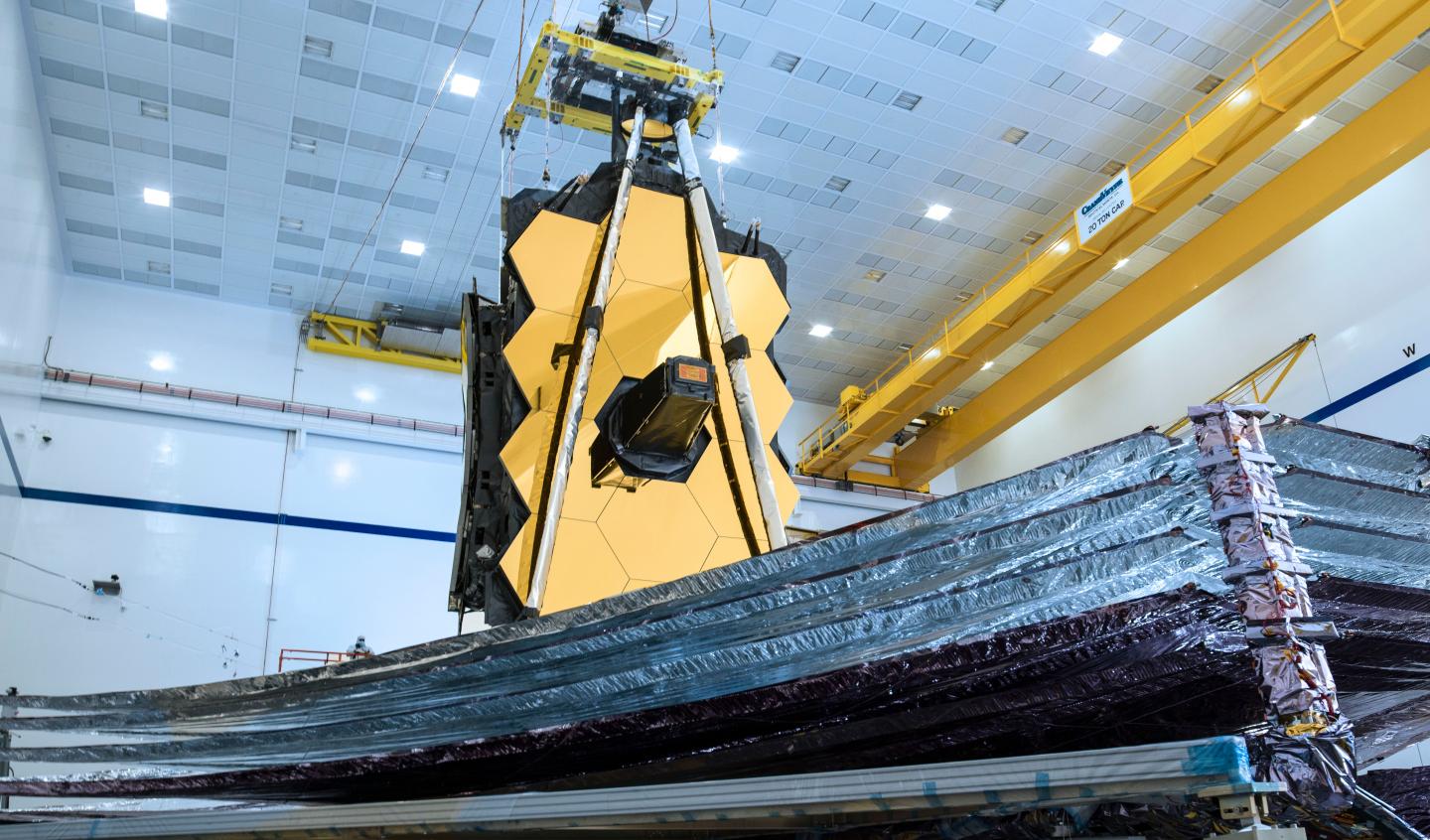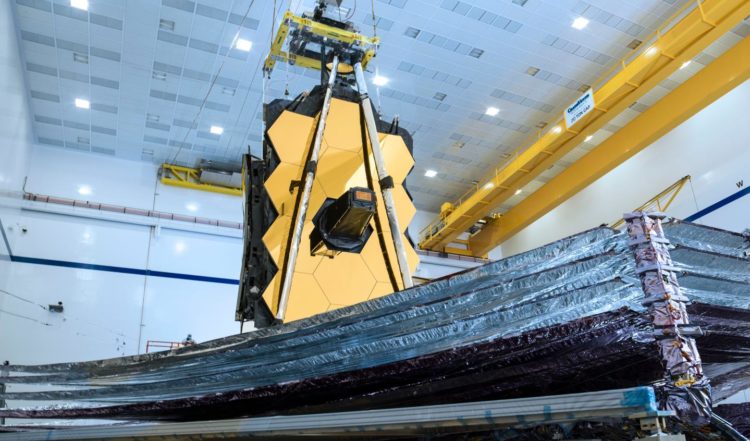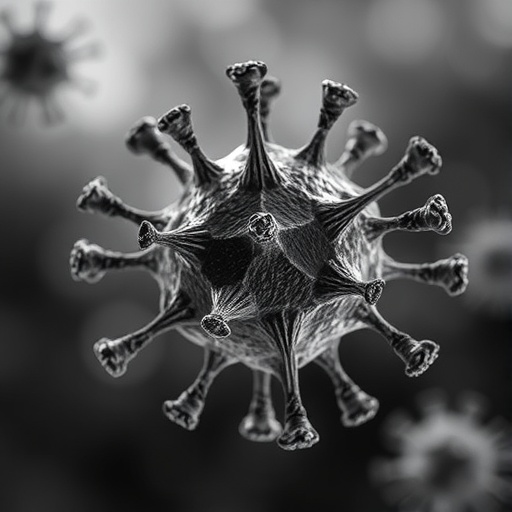
Credit: NASA/Chris Gunn
The sunshield for NASA’s James Webb Space Telescope has passed a test critical to preparing the observatory for its 2021 launch. Technicians and engineers fully deployed and tensioned each of the sunshield’s five layers, successfully putting the sunshield into the same position it will be in a million miles from Earth.
“This was the first time that the sunshield has been deployed and tensioned by the spacecraft electronics and with the telescope present above it. The deployment is visually stunning as a result, and it was challenging to accomplish,” said James Cooper, NASA’s Webb Telescope Sunshield Manager at NASA’s Goddard Space Flight Center, Greenbelt, Maryland.
To observe distant parts of the universe humans have never seen before, the Webb observatory is equipped with an arsenal of revolutionary technologies, making it the most sophisticated and complex space science telescope ever created. Among the most challenging of these technologies is the five-layer sunshield, designed to protect the observatory’s mirrors and scientific instruments from light and heat, primarily from the Sun.
As a telescope optimized for infrared light, it is imperative that Webb’s optics and sensors remain extremely cold, and its sunshield is key for regulating temperature. Webb requires a successful sunshield deployment on orbit to meet its science goals.
The sunshield separates the observatory into a warm side that always faces the Sun (thermal models show the maximum temperature of the outermost layer is 383 Kelvin or approximately 230 degrees Fahrenheit), and a cold side that always faces deep space (with the coldest layer having a modeled minimum temp of 36 Kelvin, or around minus 394 degrees Fahrenheit). The oxygen present in Earth’s atmosphere would freeze solid at the temperatures experienced on the cold side of the sunshield, and an egg could easily be boiled with the heat encountered on the warm end.
Webb has passed other deployment tests during its development. Equally as important were the successful disposition of issues uncovered by those earlier deployments and the spacecraft element environmental testing. As before, technicians used gravity-offsetting pulleys and weights to simulate the zero-g environment it will experience in space. By carefully monitoring the deployment and tensioning of each individual layer, Webb technicians ensure that once on orbit, they will function flawlessly.
“This test showed that the sunshield system survived spacecraft element environmental testing, and taught us about the interfaces and interactions between the telescope and sunshield parts of the observatory,” Cooper added. “Many thanks to all the engineers and technicians for their perseverance, focus and countless hours of effort to achieve this milestone.”
The sunshield consists of five layers of a polymer material called Kapton. Each layer is coated with vapor-deposited aluminum, to reflect the Sun’s heat into space. The two hottest sun-facing layers also have a “doped-silicon” (or treated silicon) coating to protect them from the Sun’s intense ultraviolet radiation.
To collect light from some of the first stars and galaxies to have formed after the Big Bang, the telescope needed both the largest mirror ever to be launched into space, and the sunshield that has the wingspan of an entire tennis court. Because of the telescope’s size, shape and thermal performance requirements, the sunshield must be both big and complex. But it also has to fit inside a standard 16-foot-(5-meter)-diameter rocket payload fairing, and also reliably deploy into a specific shape, while experiencing the absence of gravity, without error.
Following Webb’s successful sunshield test, team members will begin the long process of perfectly folding the sunshield back into its stowed position for flight, which occupies a much smaller space than when it is fully deployed. Then, the observatory will be subjected to comprehensive electrical tests and one more set of mechanical tests that emulate the launch vibration environment, followed by one final deployment and stowing cycle on the ground, before its flight into space.
Webb will be the world’s premier space science observatory. It will solve mysteries in our solar system, look beyond to distant worlds around other stars, and probe the mysterious structures and origins of our universe and our place in it. Webb is an international project led by NASA with its partners, ESA (European Space Agency) and the Canadian Space Agency.
###
For more information on Webb, visit: http://www.
Image credit for header: NASA’s James Webb Space Telescope is seen with its revolutionary five-layer sunshield fully deployed, standing tall in Northrop Grumman’s clean room in Redondo Beach, California. Credit: NASA/Chris Gunn
By Thaddeus Cesari
NASA’s Goddard Space Flight Center
Media Contact
Thaddeus Cesari
[email protected]
Original Source
https:/





